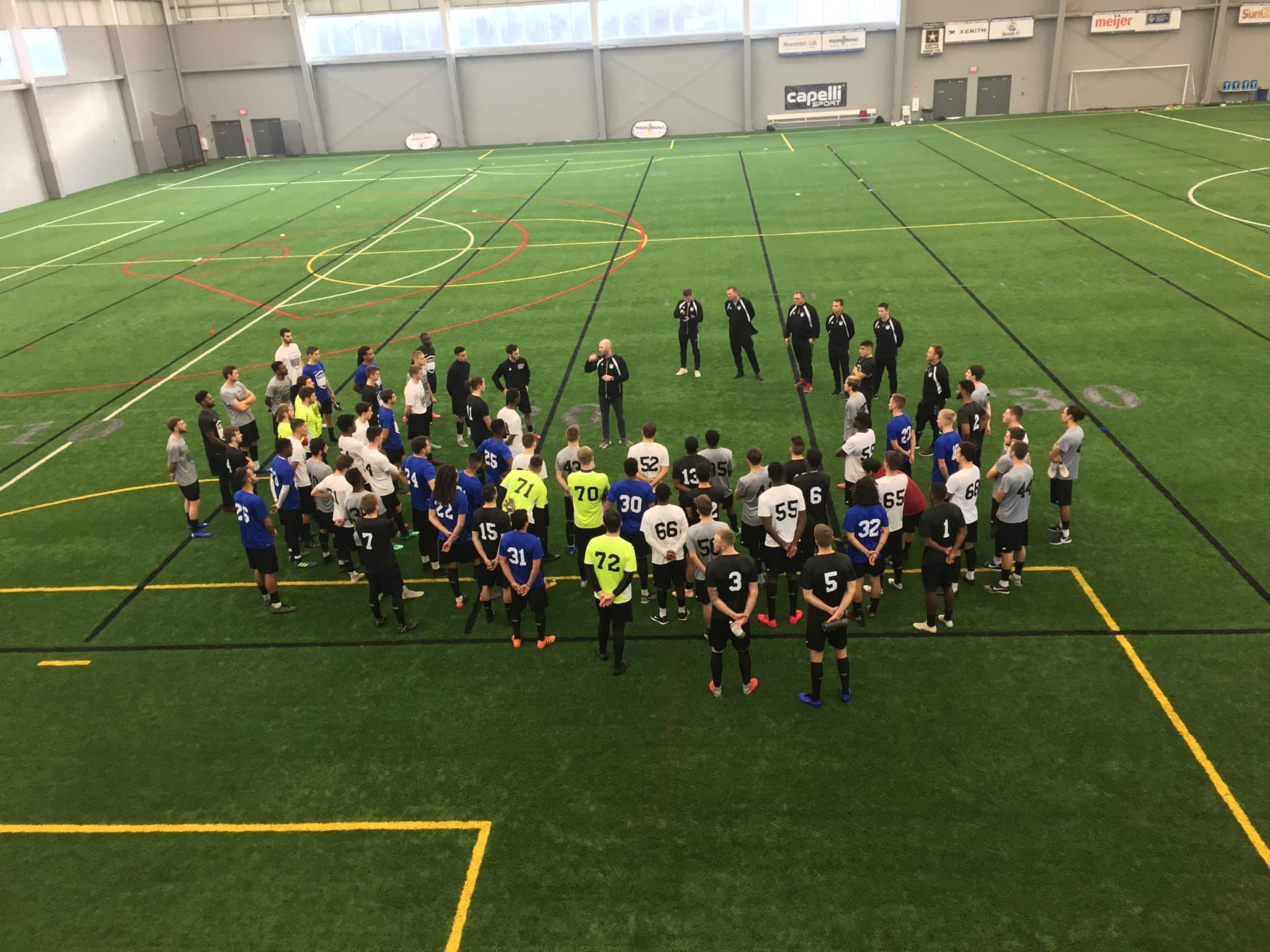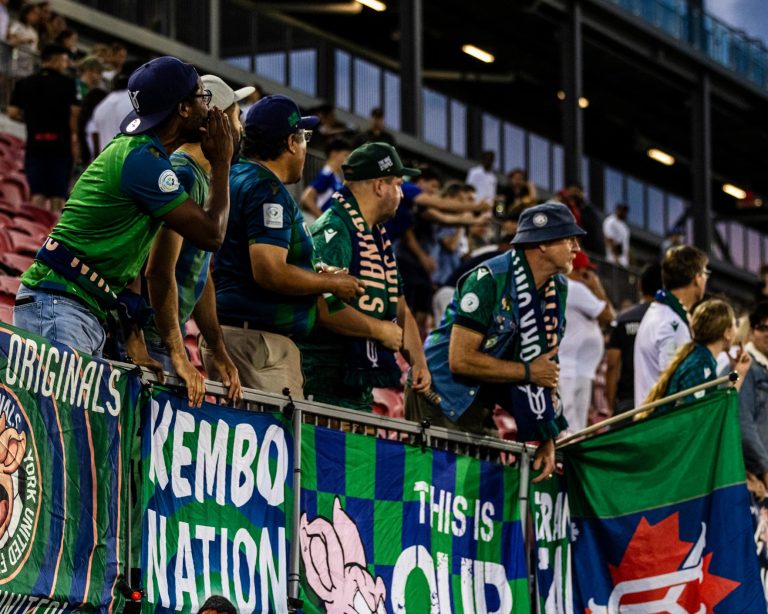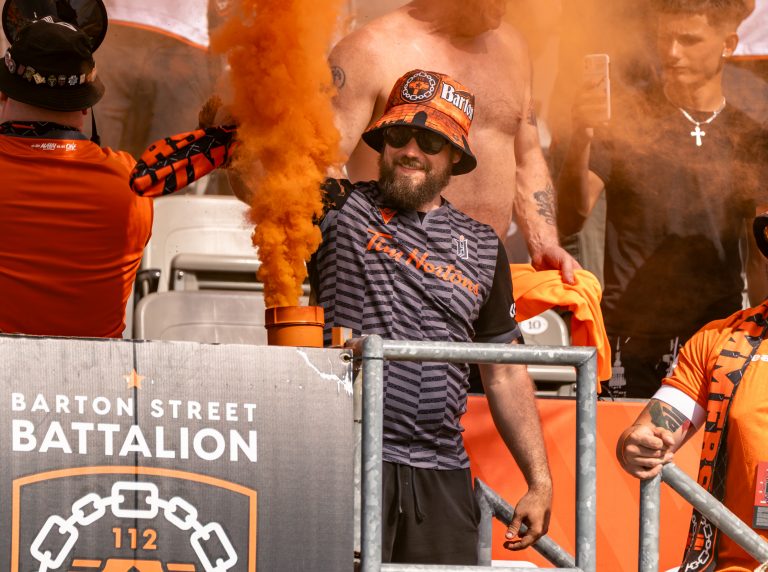
Photo Credit: Ryan Makuch/ISNSoccer.com

On December 19th and 20th, over 70 top young soccer prospects and more than 20 professional clubs flooded Brighton, Michigan. The purpose for players and scouts alike was to make professional dreams come true at the third annual Midwest Pro Soccer Combine.
The combine itself consists of fitness tests followed by six games, each of the four teams playing each other once. The games are slightly shorter than full-length at sixty minutes each, but it is plenty of time for the players to showcase their skills. The goalkeepers were also given a special thirty-minute session in front of the scouts as well. On the first day, all players were given the opportunity to hear from St. Louis FC’s Russell Cicerone and ask him questions about playing the game at a professional level. For the young players, it served as an opportunity to understand exactly what it takes to play the game at the level they hope the combine can help take them to.
For those who organize MPSC, this is not just a two-day event. Eric Rudland, currently the head coach of the NPSL’s AFC Ann Arbor, is the combine director. His preparation starts much earlier in the year. “The process for us probably starts in the summertime, end of July, early August, where we put together the schematics of player lists that would be intriguing for the combine.” The work put in over the course of the summer is essential to making the event run smoothly.

The other vital part for the combine is, of course, the selection of players. Rudland said that over 150 players applied for the combine. To whittle down the field, plenty of video footage, including full-length matches and highlight films, was watched in order to get to the number closer to seventy for the combine. The actual process of selecting the players is more than just picking high-performers with no methodology, as Rudland explained, “We look at date of birth, whether it’s a foreign or domestic player, history, preferred position, dominant foot – left foot vs. right foot – then we compile the schematics of players who have applied based on position. Then we rank the players based on position and we try and bring in the top four to six players in each position.”
One of the most interesting factors is comparing foreign and domestic players. The MPSC has been a fantastic opportunity not for players within the region, but also those who either are looking to come over to play in the United States or are already in place from a college or club career. One of those players is Yazeed Matthews, a native of Johannesburg, South Africa, but has just finished his senior season at Coastal Carolina.
For Matthews, the combine was an opportunity to train in front of teams in a well-organized and timely environment. Keeping things on time and on track were essential to the schedule for the combine, and Matthews appreciated that. The Coastal Carolina graduate also mentioned how he was used to needing to show up with his own jersey and attire for other combines and tryouts. With the combine sponsored by Capelli Sport, though, players were attired in jerseys, shorts, and socks for the two days, resulting in some removed stress for players. Instead of worrying about what to bring, they were allowed more focus on the game at hand.
One variable that is tough to control in events like a combine are the meshing of players. Players are split into four teams of about sixteen players each. While you may get one or two players who have teamed together, it is very difficult to immediately gel with players you have never met before. That is where the coaching staff comes in. As Rudland said about his staff, “Making soccer look as good as [they] can in a short amount of time is what they do well.”

The four teams’ coaches included three Division I head coaches (Chad Wiseman of Western Michigan, Nick Deren of Detroit, and Eric Nichols of Bowling Green) and another high-level Division I assistant (Cale Wassermann of Michigan State). Rudland spoke of how supportive the coaches, specifically in Michigan, have been of the event, but the combine continues to expand its reach by involving Nichols of Bowling Green in Ohio. The combine continues to serve as a great opportunity for coaches all over the region to interact with high-level players and expand their contacts within the realm of the sport.
Two days in December help shape the careers of over seventy players aspiring for life beyond collegiate or amateur soccer. Those who impress see doors open as a result of high-level clubs from the country taking part. Twenty-three players from the 2017 combine received professional contracts. Everyone at the 2018 installment hopes to add their name to an ever-growing list of professional alumni of the Midwest Pro Soccer Combine.



